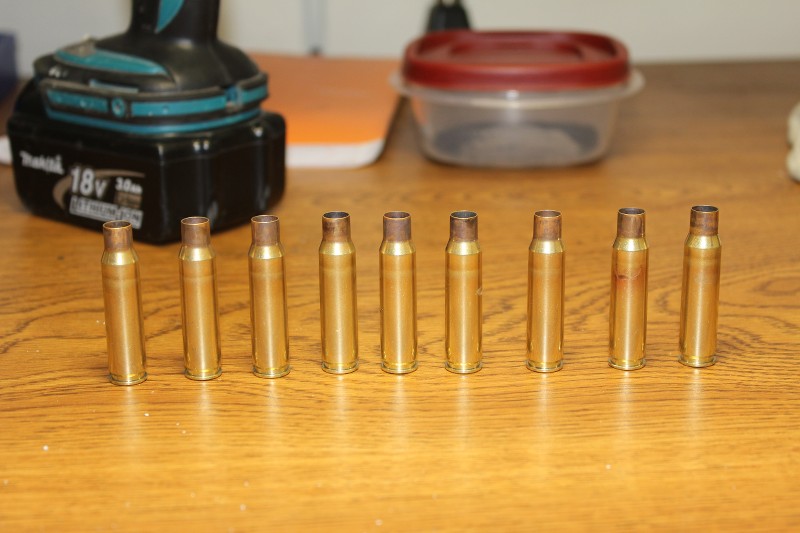Great discussion guys, lots of good honest info and results. God knows I have played around and experimented with this, always trying to get a better understanding of the variables. One thing not mentioned a lot is the different makes and with that, formulations of brass. Some are similar, some are not. One will cook just right, another will glow like Rudolph the Red Nosed at the same setting. Humidity is another variable, I read a thread where someone found his timing changed summer to winter. Turns out, he had the garage door open in the summer and closed in the winter. He confirmed that variable by cooling or heating the brass in controlled temp and then annealing. I found that true as well. I keep the garage at 65 in the winter and it gets well over that in the summer.
Notice that I don't say anything about the specific makes of brass in relation to the timing. That's because frankly, I think that varies with whom is making what and when for the branders. It would be in my opinion, erroneous to assume it gospel to say whinchester is....X and Rem is Y. I will say this however, the most consistant is Lapua, that is because they do in fact control their brass from start to finish...or is that Swedish?...lol. They make if for some others but no one makes it for them.
He would make a good engineer!
I think what he said should be highlighted.
The brass is all different. He has showed me and I have seen that in my brief sole work as well.
So when I talk about the glow issue, that is (in my case) RP.
I do think some is consistent, RP has stayed the same weight across the 5 years I have been checking it and usually its number 2 in the older cartridges .
Newer ones its place on the pantheon changes.
It seems they have a setup or a source for older cartridges that is currently the same, newer cartridges are different. And it could change so the pay attention part and check results applies.
Good news for me is the brass I have he has as well so I can piggy back on what he finds out.
He has some I don't. It was very interesting to see that Lapua acts very differently than the rest. They all did it a bit differently, but Lapua was by itself.
And Humidity for sure, maybe even barometric pressure.
Another one I have to follow up on is PPU (I have it in 06 and 308 partialy)
Its all I have in 7.5 Swiss. Oddly, that seems to be a special European make, the primer pockets are extremely tight.
As it has none of the reported slag or issues with the primer hole, I suspect the 7.5 may be a different stream from regular (match) , but will test and see if I can find a difference.
I have not tested the 308 or the 06, but the 7.5 base is extremely hard, so hard it takes a dedicated effort to (i.e do a kind of crimp removal but to get a slope to the rim so the primers feed in better as well as a primer uniformer step).
While its not scientific I will do the same with Lapua (I have some range p[pickup Lapua that someone blew the primer pocket out of) and the other brass. Sort of a crude hardness test just out of interest.
So, clearly details matter a whole lot.
Never assume on past that its going to stay the same in the future.


